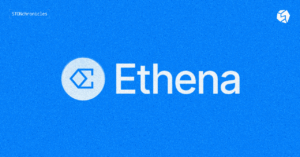
Centralized Exchanges (CEX) have long dominated the cryptocurrency landscape, but there is an alternative: Decentralized Exchanges (DEX). This exploration delves into the intricate differences between these two trading platforms, unveiling the complex ecosystem of digital asset exchanges. From the user-friendly interfaces of traditional platforms to the groundbreaking principles of decentralized trading, discover the nuanced advantages, challenges, and transformative potential of these competing approaches to financial transactions.
Most centralized exchanges (CEX) mirror traditional financial services like the New York Stock Exchange. This similarity makes their interfaces intuitive and user-friendly, especially for newcomers to digital asset trading. The foundational architecture for most CEX is the Order Book model — a system where all transaction and balance information is meticulously stored within the exchange’s internal database.
| Pros | Cons |
| CEX platforms offer flexibility: Seamless conversion between fiat currencies and cryptocurrencies Crypto-to-crypto exchanges (like trading Bitcoin for Ethereum) Advanced trading instruments such as margin trading and limit orders | Transactional fee model that covers virtually every action: Depositing funds Withdrawing assets Executing exchanges Significant control over user activities, with the power to: Restrict withdrawals Impose deposit limits Manage user interactions at their discretion |
The DEX Alternative
In contrast, Decentralized Exchanges (DEX) address centralized shortcomings. By eliminating intermediaries, DEX platforms:
- Reduce commission structures
- Enhance transparency
- Improve security
- Enable liquidity pooling across multiple participants
The shift represents more than a technological change—it’s a fundamental reimagining of financial exchange in the digital age.
Potential Advantages of DEXs
- Token Diversity. DEX platforms offer an unprecedented array of tokens for trading. Unlike traditional exchanges with limited options, here you’re not just a spectator—you’re a creator. Anyone may create their own liquidity pool. No approvals, no certifications needed. It’s like having a financial workshop where you can craft and trade your own financial instruments.
- Fortress-Level Security. Your funds remain in your control. By keeping assets in personal wallets, DEX eliminates the risk of centralized theft. The only vulnerability emerges if you voluntarily grant third-party access — essentially handing over your financial keys.
- Anonymity. Forget endless forms and invasive verification processes. All you need is a Web3 wallet. No personal data required.
- Radical Transparency. Blockchain technology transforms financial transactions into an open book. Every movement, every transfer becomes trackable.
- Decentralization. No single entity can block your access. Even if an interface restricts you, the underlying blockchain contracts remain accessible. As long as a single network node exists, your financial autonomy persists.
Potential Drawbacks
- Token Validation Challenges. The open nature of DEX is a double-edged sword. Anyone can mint a token, which means navigating a landscape filled with potential scams. Distinguishing genuine projects from fraudulent ones requires keen insight and experience.
- Smart Contract Vulnerability. While DEX security is generally robust, it’s not impenetrable. The immutable nature of smart contracts means that once a vulnerability is discovered, it can’t be quickly patched. Attempts to make contracts updatable ironically introduce new security risks — a technological catch-22.
- Trading Complexity. Decentralized trading isn’t for the faint-hearted. Challenges like price slippage, impermanent losses, and complex arbitrage mechanisms demand sophisticated understanding.
- Network Fragmentation. The blockchain ecosystem is diverse. Choosing a DEX isn’t just about the platform, but also compatible networks. Not all DEX platforms play nicely across every blockchain environment.
- Liquidity Scarcity Problem. Numerous tokens, including low-liquidity ones, are traded on decentralized exchanges (DEX). Unlike centralized exchanges (CEX), which always have market makers, DEXs must attract users to become market makers themselves. However, this problem is increasingly being addressed through the creation of various aggregators. For instance, the Omniston protocol will aggregate liquidity from both CEX and DEX platforms.
Comparative Analysis: DEX vs CEX
| Characteristic | CEX | DEX |
| Restriction Risk | High | Low |
| Management Control | Single Organization | Community-Driven (DAO) |
| User Anonymity | Requires KYC | Web3 Wallet Sufficient |
| Asset Access | Centralized Control | User-Controlled Wallets |
| Blocking Risk | High | Low |
| Fiat Currency Support | Available | Limited |
| System Resilience | Low | High |
| Advanced Trading Tools | Comprehensive | Partially Available |
| Transaction Transparency | Limited | Full Blockchain Visibility |
| Notable Platforms | Binance, Coinbase | Uniswap, STON.fi |
Wrapping Up
While CEX platforms offer familiarity and comprehensive tools, DEX platforms champion user autonomy, transparency, and democratized access. Each model brings unique strengths: centralized exchanges provide intuitive experiences and advanced trading mechanisms, while decentralized platforms offer unprecedented security, anonymity, and user control.





